Experts in all fields talk about the importance of flexibility. When it comes to project management, it is the flexibility of the team and the software it uses that allows to get rid of the main problems.
If the company had a failed project, it was most likely caused by
- communication problems;
- no clearly described requirements for the final product;
- incorrectly set deadlines for the implementation of intermediate stages and the entire project.
So, all these complications can be permanently eliminated from teamwork. More and more often, flexible project management and appropriate tools are used for this. This is exactly what we will describe in the article.
What is project management, why it is needed and why it is important
The goal of any project is to implement an idea. Project management is necessary for each project to achieve its goal.The project manager is a specialist who plans activities, communicates with the team and the customer, monitors progress, notices gaps and trends, solves problems and reports on the result. The project manager also makes sure that the team does not lose sight of the goal. This person also
- carefully structures work;
- knows how to determine the main and secondary;
- can create a favorable working atmosphere;
- monitors compliance with deadlines and implementation of the budget;
- tries to take risks into account.
Of course, it is impossible to do all this without special adaptive software for project management. Perhaps only for extremely simple projects which take a few hours. In all other cases, project management works as it should only with the appropriate software.
To avoid confusion with a large number of tasks, the project manager draws up a project plan and periodically reviews it. A well-organized workflow helps each participant work on their task without distraction.
At the same time, good workflow organization encourages team members to share knowledge and experience. It inspires and prompts creative solutions.
The project manager controls that the used resources bring maximum benefit. This makes the terms of cooperation marketable, and the product competitive. And it is the project management who helps guide the customer and the team in the right direction even at the first stages of product development.
Traditional and flexible methods of project management
There are traditional and flexible approaches to project management. In the traditional approach, the project manager together with the team determine the milestones in advance: final goals and intermediate results. Due to its rapidity and consistency, this approach was called Waterfall.
It is convenient to use with teams that are well versed in the development of niche products or services, where each participant understands his work, and the customer is ready to wait for the result by the deadline and has no doubts about its quality. "Waterfall" is not suitable for projects with changing conditions. Due to the specifics of the approach, changes in the market or business do not allow the customer to define additional characteristics for the product or change the current ones in process.
The traditional approach does not allow making significant changes after the start. Therefore, there is a great risk of realizing that something is wrong with the product at the final stage of work, when something can still be changed, but it will be very expensive and will take a long time.
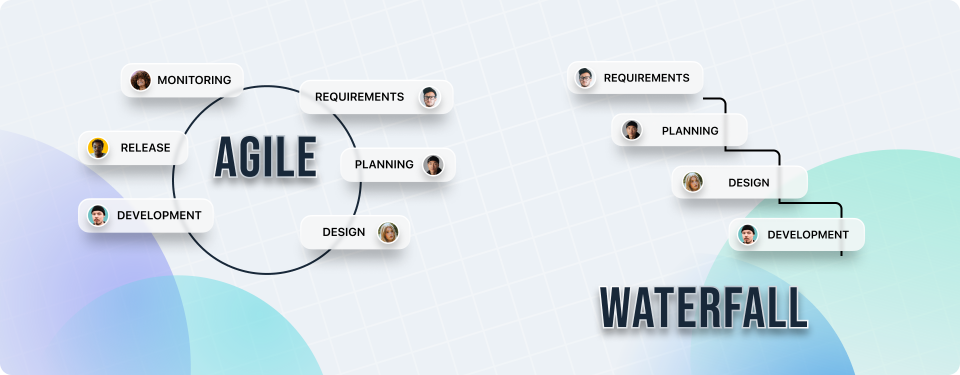
Project management methods that involve adaptability are called flexible, Agile. In flexible methods, the project is divided into subprojects or sprints, which are smaller segments of work. The team reports the results of each of them to the manager or directly to the customer. He, in turn, gives feedback: shares comments and compares the result with his vision.
If the customer wants to change the characteristics of the product at any stage of the work, he discusses the possibility with the team. By the way, the success of the product largely depends on the customer's involvement in the work process.
Usually, flexible development consists of 6 stages:
- Research. During this period, the team studies what needs to be done and for whom, what the market already has.
- Creating a prototype. At the beginning, an approximate flowchart of the product's operation is sufficient.
- Development. This is already direct work on the product, in which the entire team is involved.
- Testing. In agile methodologies, development and testing are performed together to see if something is going wrong as quickly as possible and fix it.
- Release. This is the moment when the finished product is presented to the target audience.
- Monitoring. It aims to analyze how much the product is in demand, whether there are any shortcomings in its operation, etc.
Working with the project in flexible methodologies takes longer, but allows the client to check the vision of the goal at intermediate stages of development and consult with the team on improving the product, making changes to the work in a timely manner.
Types of Agile Management
No matter what type of agile management you choose, you should know the 12 principles of Agile.
- The main thing in work is customer satisfaction.
- Changing requirements at any stage of work is normal.
- Updated versions of the product should be released regularly, the more often the better.
- Developers and customers should communicate as often as possible.
- Team motivation is extremely important.
- Personal communication should take place constantly, at least with video communication.
- The main indicator of progress is the product.
- It is very important to maintain a steady pace of work.
- Each new project is a chance to improve the development process.
- Unnecessary work should be reduced.
- If you can give up micromanagement, do it.
- A regular analysis is needed of how the quality of work can be improved. Useful innovations have to be tested and implemented as soon as possible.
Scrum
A popular type of agile management used to work with projects in sales, marketing, IT and HR. In Scrum the project is broken down into smaller tasks called "sprints".
A deadline is determined for each "sprint", usually up to 2-4 weeks. After that, the team reports to the customer about the results, problems and insights. Regular planning and prioritization increases productivity. Clients are rarely dissatisfied with the result, and the team has the time and resources to fill in the gaps in the work.
Kanban
A visual style of project management characterized by clarity and accessibility. The project manager tracks progress graphically, for example, on a whiteboard. Work processes are divided into columns: "to do", "in progress" or "done". If necessary, you can add "agreement", "verification" and other stages. Their number and names depend on the specifics of the project and the team.
Extreme Programming (eXtreme Programming - XP)
Focuses on the technical aspects of software development. This type of project management is only suitable for the IT industry. XP is focused on the following processes: coding, testing, design and communication. Senior specialists work mainly in this methodology.
The author of the approach, Kent Beck, suggested 12 project work practices: planning game, short releases, system metaphor, simple design, user tests, refactoring, pair programming, shared code ownership, continuous code integration, 40-hour week, constant communication with the customer, coding standards. However, extreme programming is not effective for large projects.
Adaptive Projects Framework - APF
It involves the creation of a flexible plan that takes into account probable risks and potential changes in the customer's needs. Suitable for projects with clear goals, but not defined methods of achieving them.
The parties determine the conditions immediately before the work cycle, and not weeks and months in advance. At APF, work has a clear cause-and-effect relationship: at each stage, the team focuses on tasks that increase the value of the product.
Tools for Agile Project Management
A project manager should be multifunctional and organized at the same time. We have made up a list of the best software for flexible project management with prices, features and disadvantages.
Worksection
Platforms: Web, Windows, iOS, Android.
Features: Worksection is a convenient task manager for different teams. It offers managing several projects at the same time. The tool has Gantt charts, Kanban boards, time tracker and a visual dashboard, giving the general overview of the project status on the monitor. Inbuilt integrations with GoogleDocs, Slack, Telegram, Viber and CRM systems.
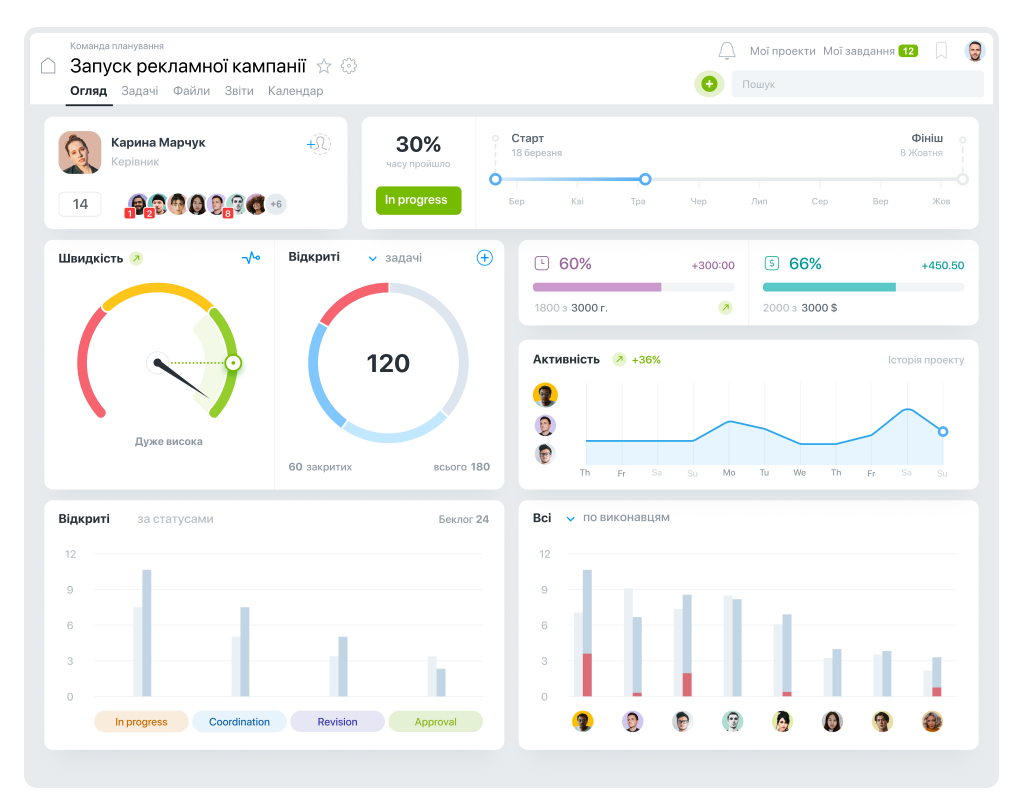
Disadvantages: no offline version, mobile app is not always perfect.
Pricing: a free version is available for 5 users and 2 projects. Paid tariffs cost between $29 and $199 per month. You can try a chosen tariff plan for free during a 14-day period.
Rating at Capterra is 4.9.
ClickUp
Platforms: Web, iOS, Android, Windows, Mac, Linux.
Features: a functional software with many tools for flexible design: chats, wiki-docs, integrations with Google Workspace, Dropbox, Zapier. You can set up filters according to dates, timelines etc.
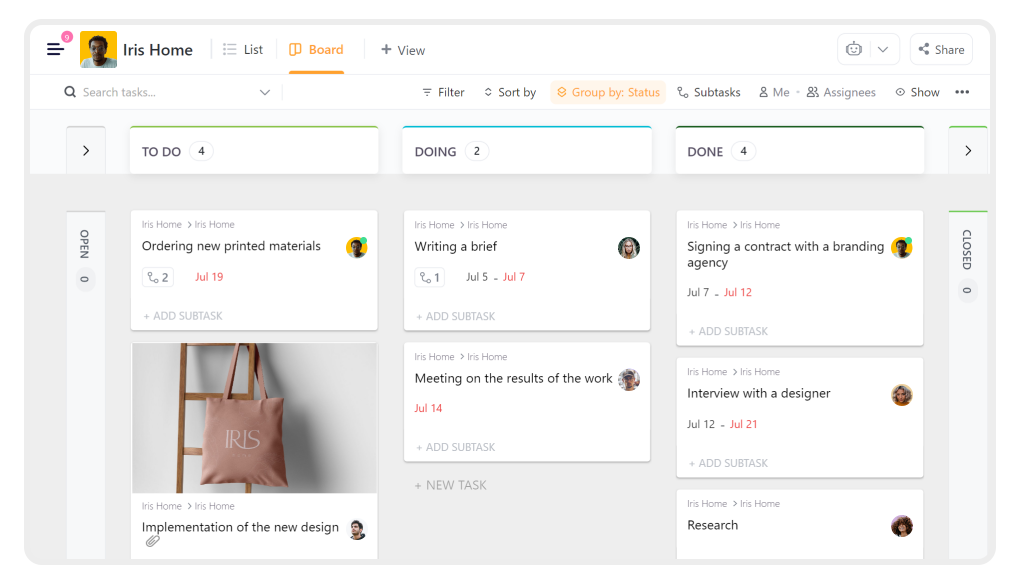
Disadvantages: not all users are satisfied with a mobile app.
Pricing: you can use 3 boards for free, more advanced versions start at $5 per month. A 14-day trial period is also available.
Rating at Capterra is 4.7.
Smartsheet
Platforms: Web, iOS, Android.
Features: among all flexible tools for project management, this one is mostly chosen by users who prefer to work with tables. It also offers Gantt charts, a calendar and reminders, integration with Jira, Google and Microsoft products.
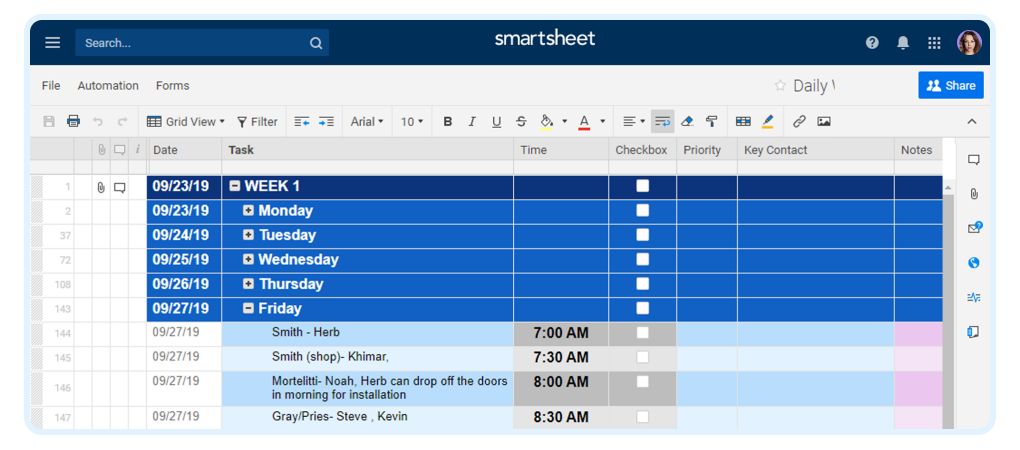
Disadvantages: the reminders are not always correct, visual features are not enough.
Pricing: the product starts at $7 per user/month. A free trial period is available.
Rating at Capterra is 4.5.
Teamwork
Platforms: Web, iOS, Android, Windows, Mac, Linux.
Features: a calendar, Kanban boards, Gantt charts, tasks and subtasks, a chat and a time tracker make this tool convenient for project management.
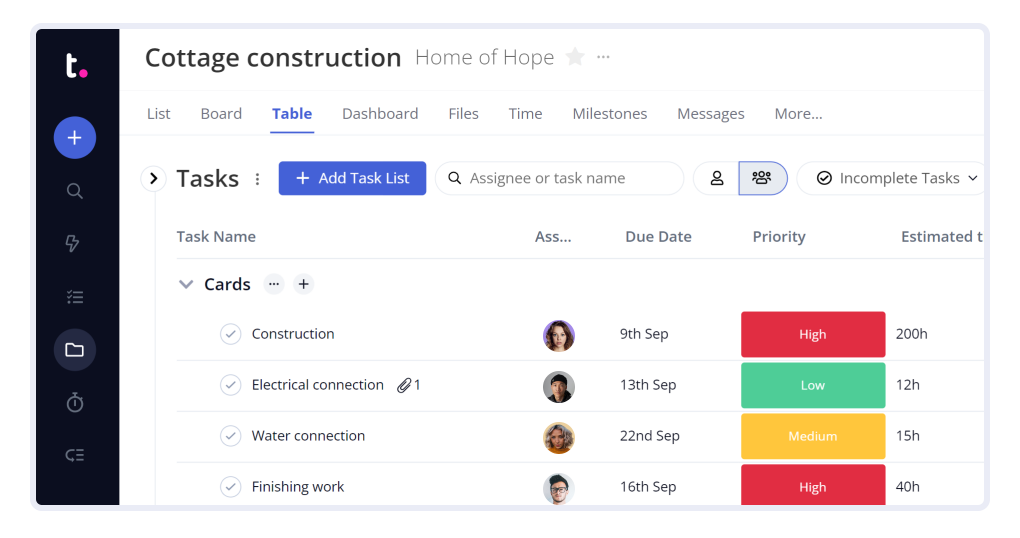
Disadvantages: some users find the interface too complicated. There are some problems with the API.
Pricing: there is a free version for users managing 1 or 2 projects. A trial version is available for 30 days. Paid tariffs cost between $10 and $18 per user/month.
Rating at Capterra is 4.5.
ProofHub
Platforms: Web, iOS, Android.
Features: this product includes many functions: Gantt charts, a calendar, a timer, notes, chats and reports.
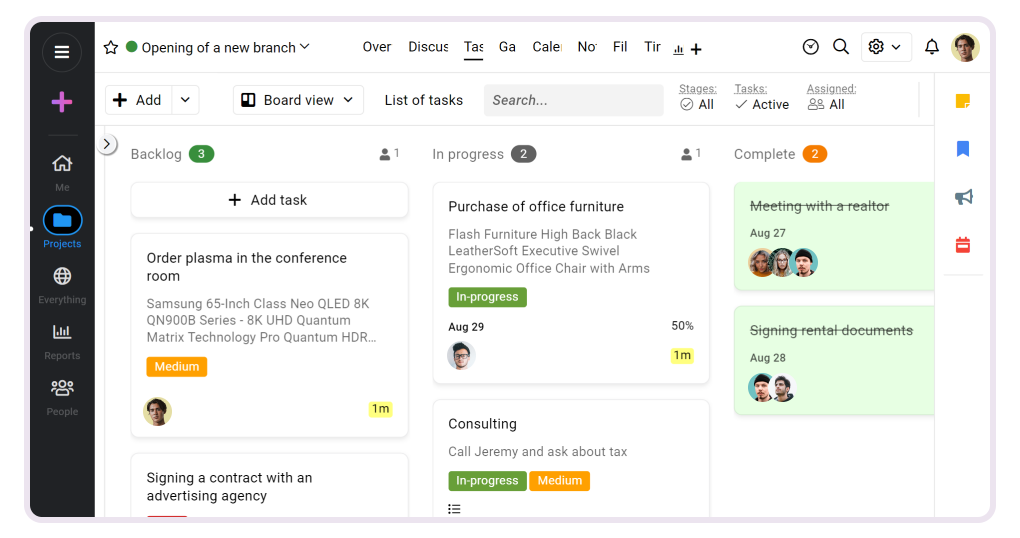
Disadvantages: not all users like the interface and navigation, the notifications are sometimes too much.
Pricing: the product costs $45 per month. A free trial period is available.
Rating at Capterra is 4.5.
Atlassian Jira
Platforms: Web, iOS, Android, Windows, Mac, Linux.
Features: one of the most popular tools for agile management. It offers Kanban boards, Scrum, useful reports, options for sprint management, tasks with different priority levels and many other advantages.
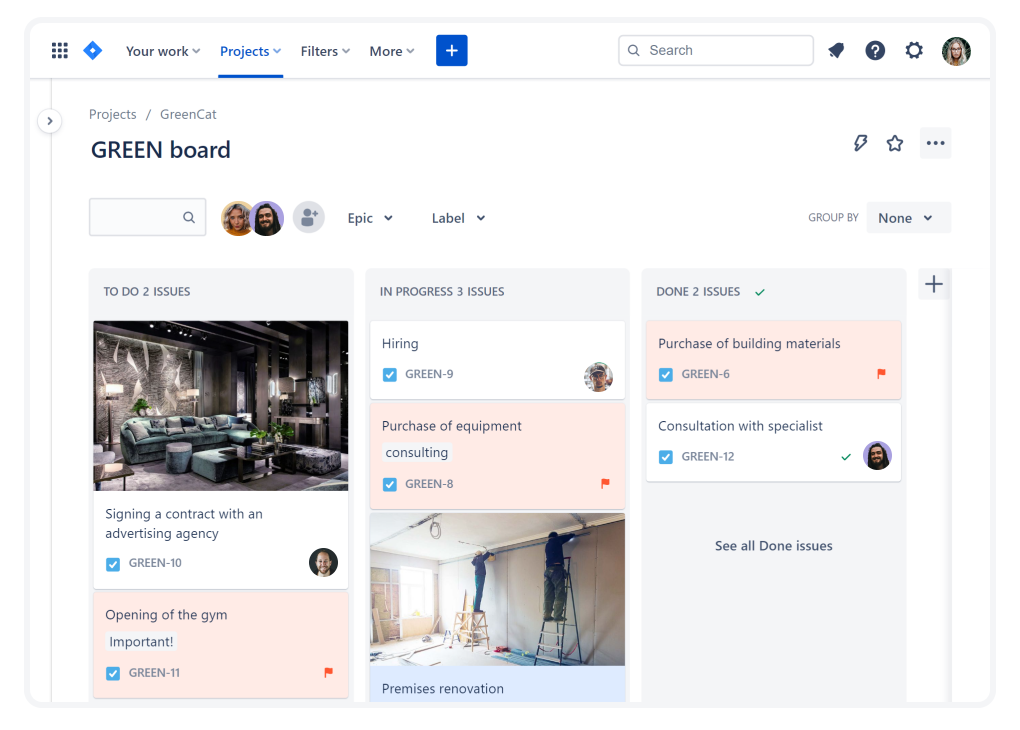
Disadvantages: because of many functions the users find it difficult to work with the interface and find the functions or information they need.
Pricing: teams with less than 10 members can use the tool for free. For bigger teams it will cost $7 per month. You can use a trial version first to see the functionality of this product.
Rating at Capterra is 4.4.
Active Collab
Platforms: Web, iOS, Android, Windows, Mac, Linux.
Features: a multifunctional product with tasks and subtasks, a time tracker, invoicing and a chat.
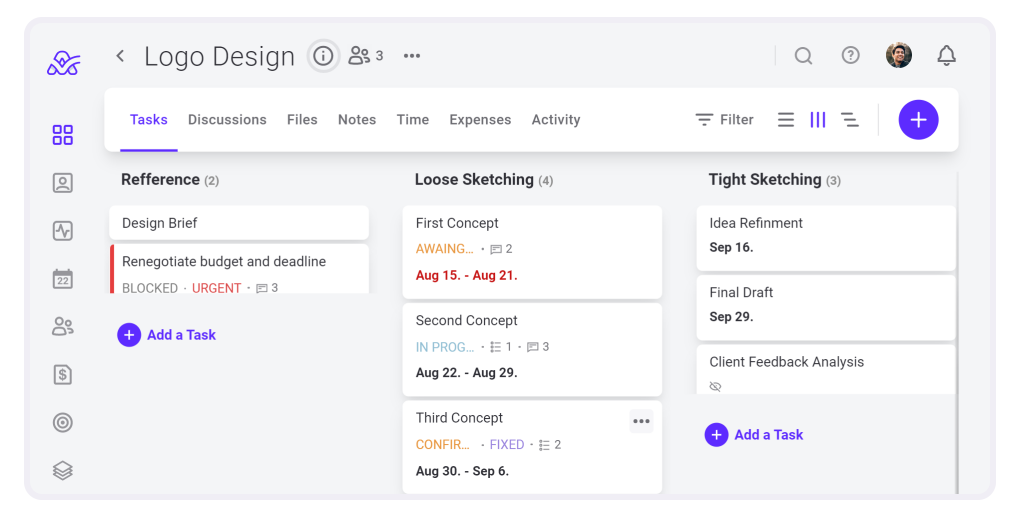
Disadvantages: for some users the features of the basic version of the tracker are not enough. The integration with a calendar is troublesome.
Pricing: the product is free for miniteams with 3 and less users. Paid tariffs start at $11 for 3 users per month. Free trial period is available.
Rating at Capterra is 4.5.
Axosoft
Platforms: Web, iOS, Windows, Mac, Linux.
Features: a convenient tool for planning sprints, tracking of bugs and fixing them. It also offers a possibility to work with wiki-docs and getting requests from the customers.
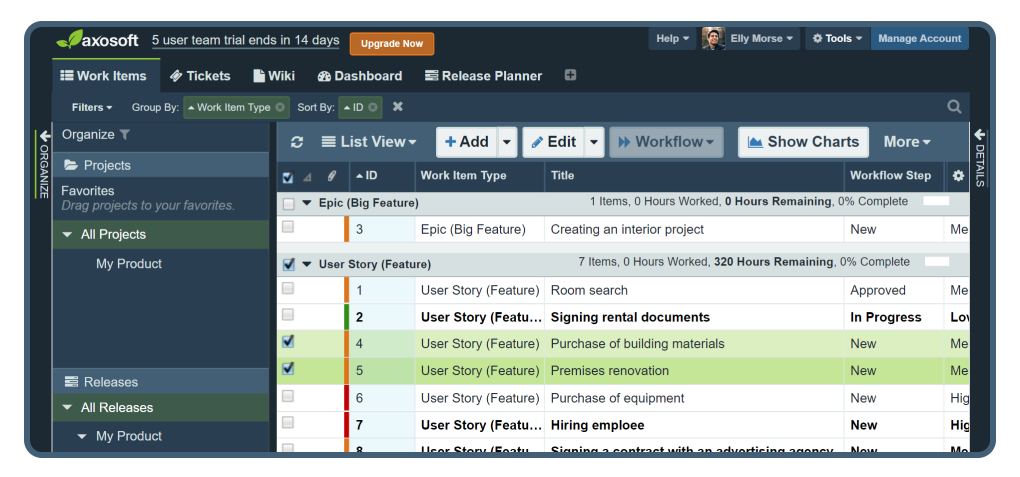
Disadvantages: poor reporting and it is not easy to find the necessary tasks.
Pricing: the tool costs $25 per month. A trial period is available.
Rating at Capterra is 4.2.
Monday.com
Platforms: Web, iOS, Android, Windows, Mac, Linux.
Features: with this tracker you can work with boards and tasks, making copies and setting priorities. It is possible to assign tasks to users, as well as viewers.
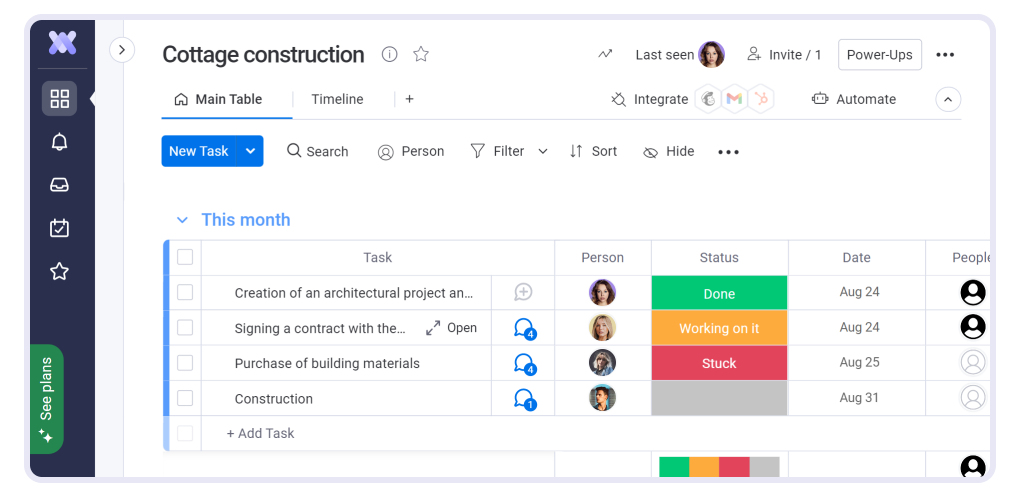
Disadvantages: rather expensive, with complicated setup.
Pricing: two team members can use the tool free of charge. For bigger teams the price is between $8 and $16 per user/month. A free trial version is available.
Rating at Capterra is 4.6.
Nifty
Platforms: Web, iOS, Android, Windows, Mac
Features: roadmaps, tasks, chats, automatization and budgeting are the highlights of this product that make it good for developers. It helps to improve productivity and accelerate the work cycle.
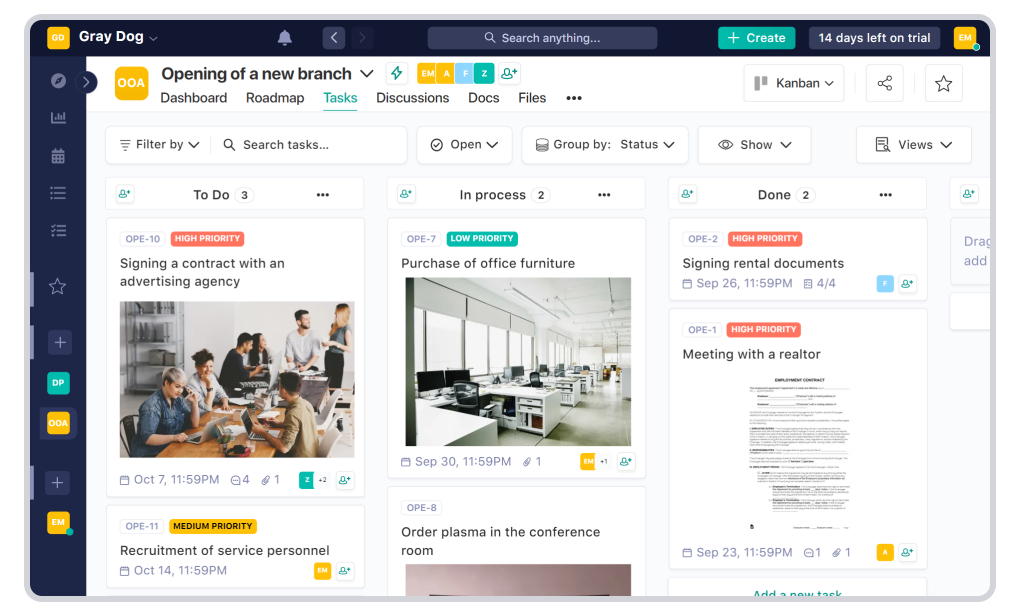
Disadvantages: users don’t like operating this tool with iPad, as well as notifications and updating of the downloaded files.
Pricing: a free version is available, offering up to 2 projects. Paid tariff plans start at $49 per month for 10 users. A free trial period is available.
Rating at Capterra is 4.7.
Wrike
Platforms: Web, iOS, Android, Windows, Mac.
Features: this product is definitely among the best agile programs. The users are attracted by various visual tools, such as Kanban boards, Gantt charts and project diagram. It offers convenient task management.
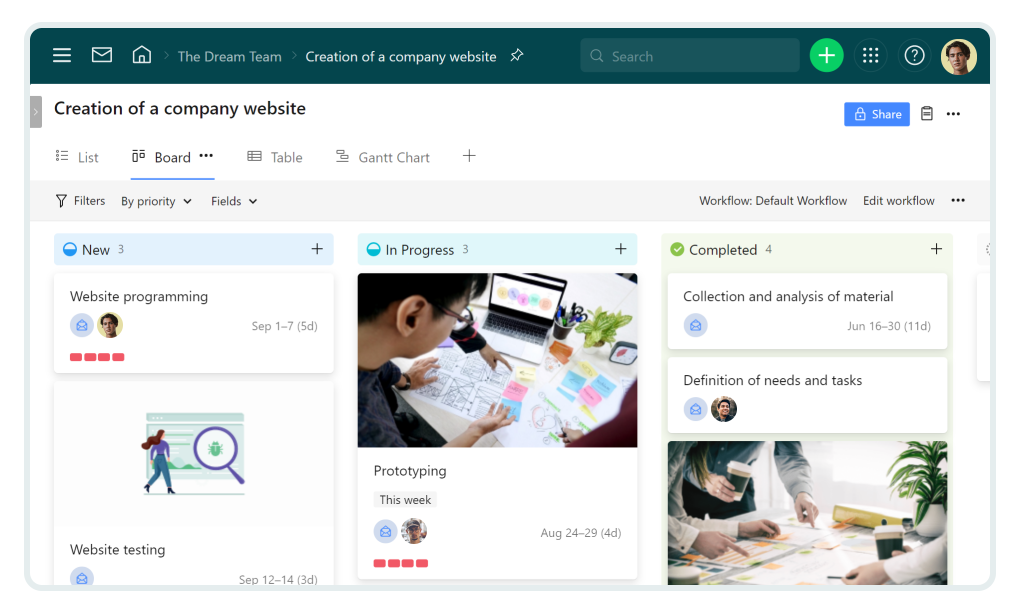
Disadvantages: it is complicated to set up the platform to make use of all the functions. You have to consult technical support regularly, and the assistance is not always prompt.
Pricing: there is a free version with limited number of tasks. Paid tariffs cost between $9.80 and $24.80 per user/month. A free trial period is available.
Rating at Capterra is 4.2.
Asana
Platforms: Web, iOS, Android, Windows, Mac.
Features: a user friendly interface is one of the strong points of this tool for agile management. It also offers many integrations: Jira Cloud, OneDrive, Gitlab, Trello etc. Project and task management is getting much more efficient with this tool.
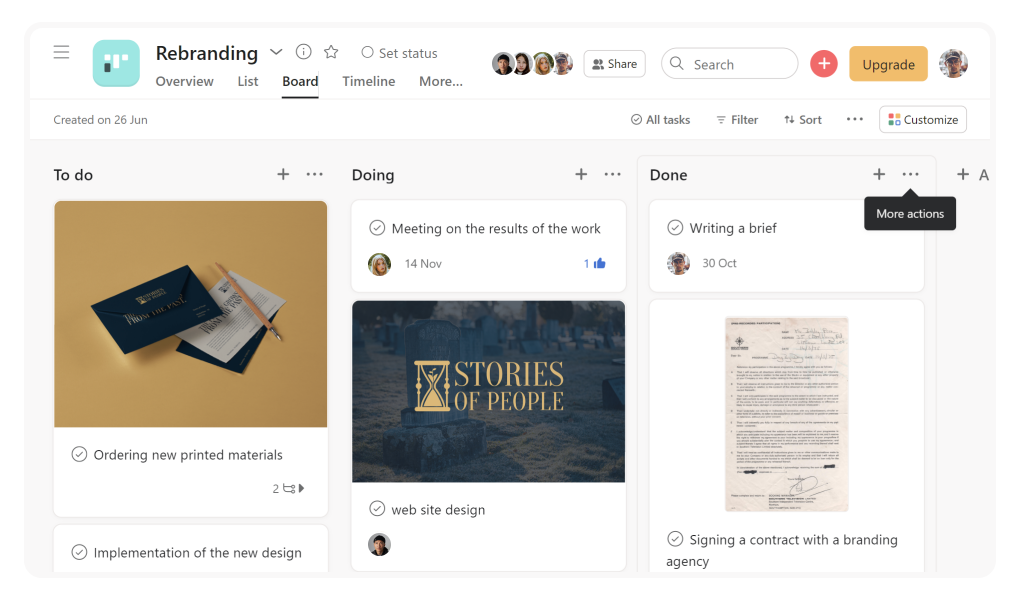
Disadvantages: notifications are not always correct, many functions are available only with integrations.
Pricing: teams with up to 15 members can use the tool free of charge, with limited functions though. The price for paid versions starts at $13.49 per user/month. A free trial period of 30 days is available.
Rating at Capterra is 4.5.
SpiraTeam
Platforms: Web, iOS, Android, Windows, Mac.
Features: this system of app lifecycle management helps to get all software requirements, testing information and other important data in one place. The main advantage of the product is a possibility to combine design and testing.
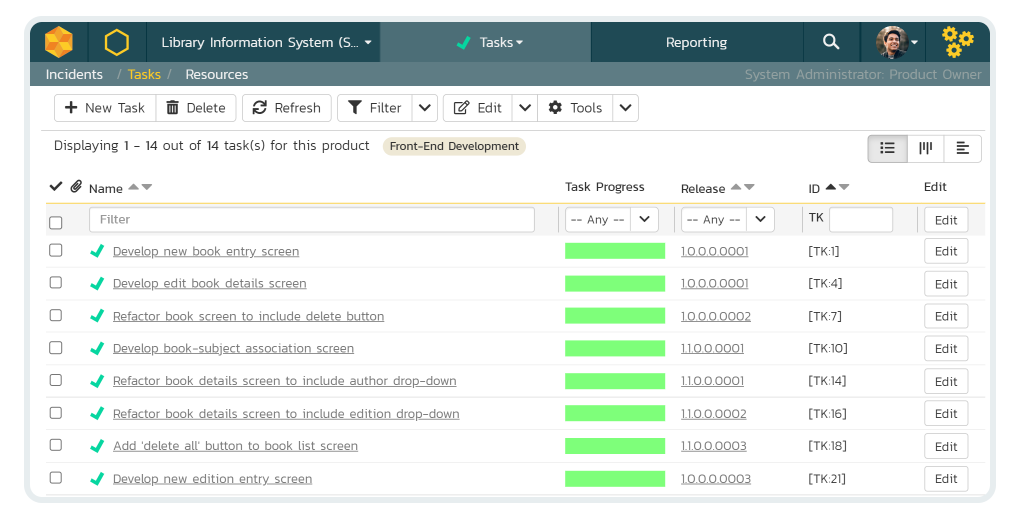
Disadvantages: high price for not perfect performance, problems with updating, setup possible with technical support.
Pricing: the price starts at $47.5 per user/month. A free trial version is available.
Rating at Capterra is 4.1.
Pivotal Tracker
Platforms: Web, iOS, Android, Windows, Mac, Linux.
Features: a flexible tool for software development which makes the real-time collaboration of remote teams much easier. It can be recommended for small teams and startups.
Disadvantages: not all users find the interface friendly, the tool is very complicated to implement without technical support.
Pricing: the tool is free for noncommercial organisations. A 60-day trial version is available. The pricing for paid versions starts at $1 per user/month (for 6-10 users). For teams with over 10 users the tool will cost $6.5 per user/month.
Rating at Capterra is 4.3.
Trello
Platforms: Web, iOS, Android, Windows, Mac.
Features: a good option for small teams, managing several small projects simultaneously. The users are attracted by a friendly interface, workflows, task cards with changeable status, integrations and process automatization.
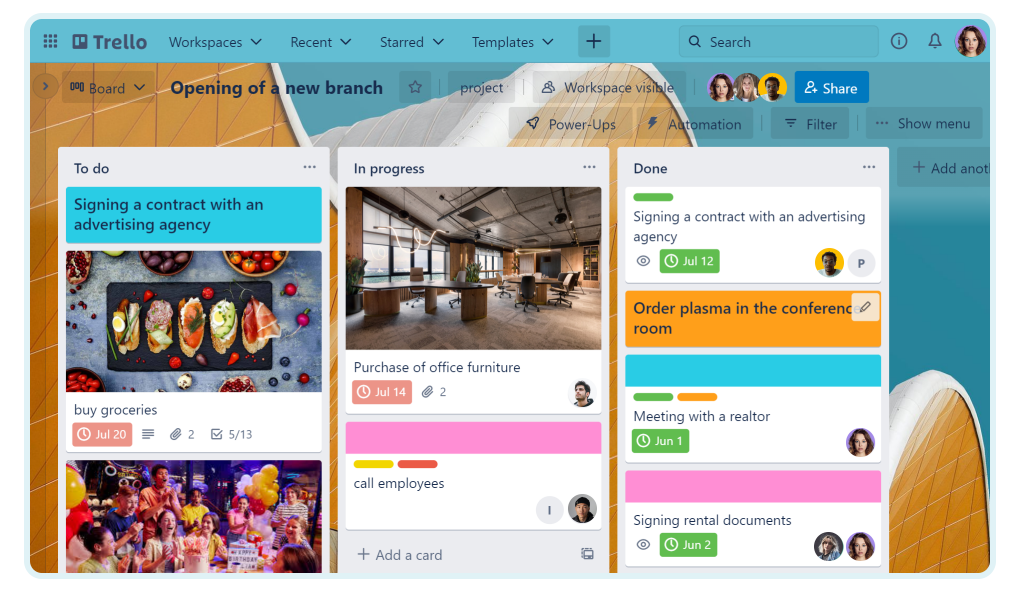
Disadvantages: some setup functions and work principles are not clear at first. The tool is not recommended for big teams.
Pricing: the tool can be used for free, but the functions will be limited, for example, with inactive calendar or project chronology. The price for paid versions starts at $6 per user/month. A free test period is available.
Rating at Capterra is 4.5.
Icescrum
Platforms: Web, iOS, Windows, Mac, Linux.
Features: another task tracker, developed as a virtual board. Graphs, progress indicators and task priorities add to its functionality.
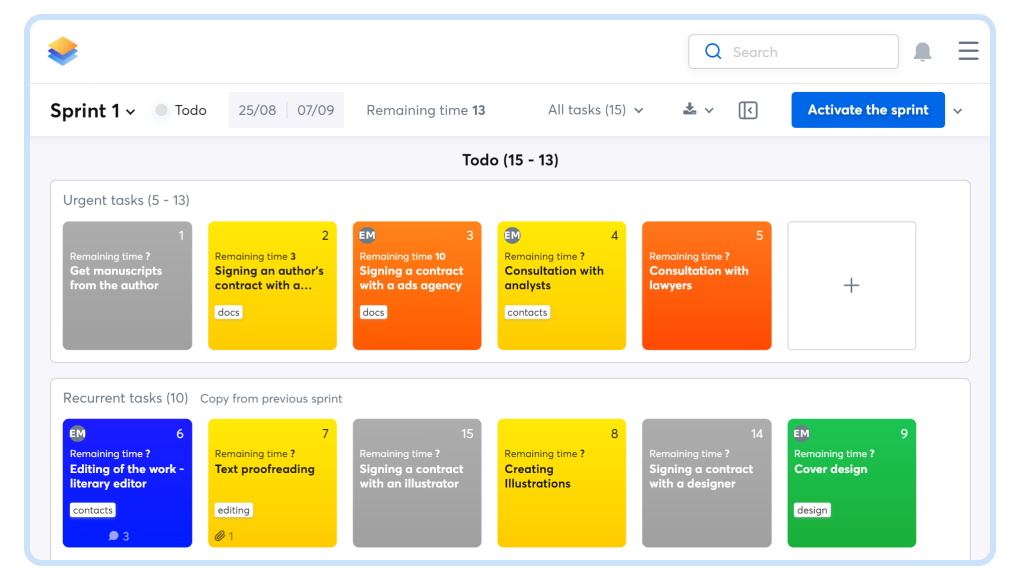
Disadvantages: not stable operation with some browsers, problems with cash and interface.
Pricing: the teams with up to 3 members can use the free cloud version. The cheapest paid tariff costs €8.90 per month for teams with up to 7 members. A 14-day trial period is available.
Rating at Capterra is 4.2.
Gravity
Platforms: Web, iOS, Android, Windows, Mac.
Features: an indeed flexible software for project management, which can be easily adapted for the needs and requirements of different teams. It offers tools for brainstorming, reporting and customer feedback.
Disadvantages: the users find it difficult to use the maximum functions without a special training. The reporting is not always troubleless.
Pricing: the tool costs $150 and more per month. A free trial version is available.
Rating at Capterra is 5.
Gitlab
Platforms: Web, iOS, Windows, Linux.
Features: the product helps to facilitate software development cycle, improve its quality and reduce expenses.
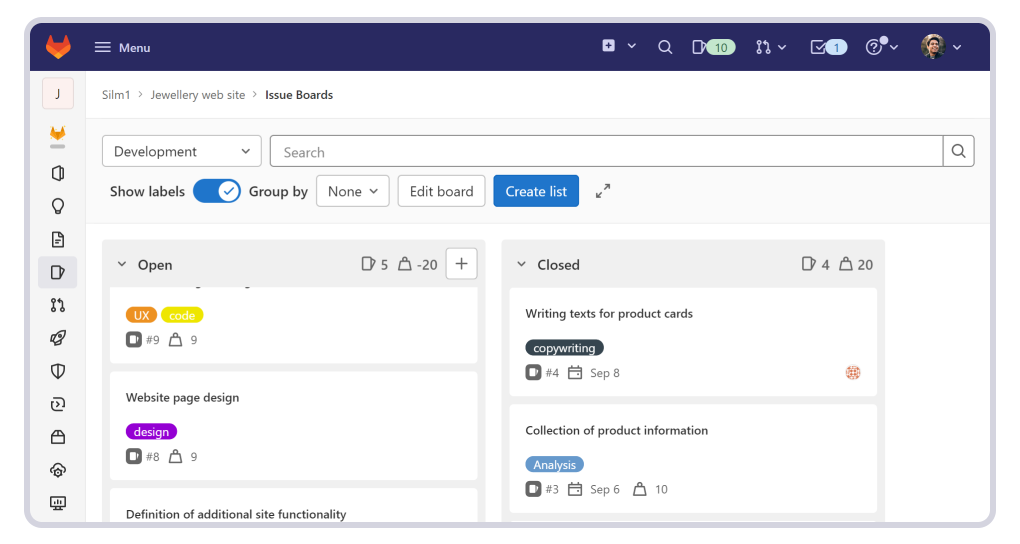
Disadvantages: the tool can seem complicated at first. Sometimes it slows down, making the work less efficient.
Pricing: a free trial version with limited functions is available. Paid tariffs cost min. $19 per user/month. You can test the tool for free during the trial period.
Rating at Capterra is 4.6.
VersionOne
Platforms: Web, SaaS, cloud.
Features: the tool makes software development more efficient, eliminating the risks. It offers good task filters, progress charts, reporting and integrations with JIRA, TeamCity, Octopus Deploy.
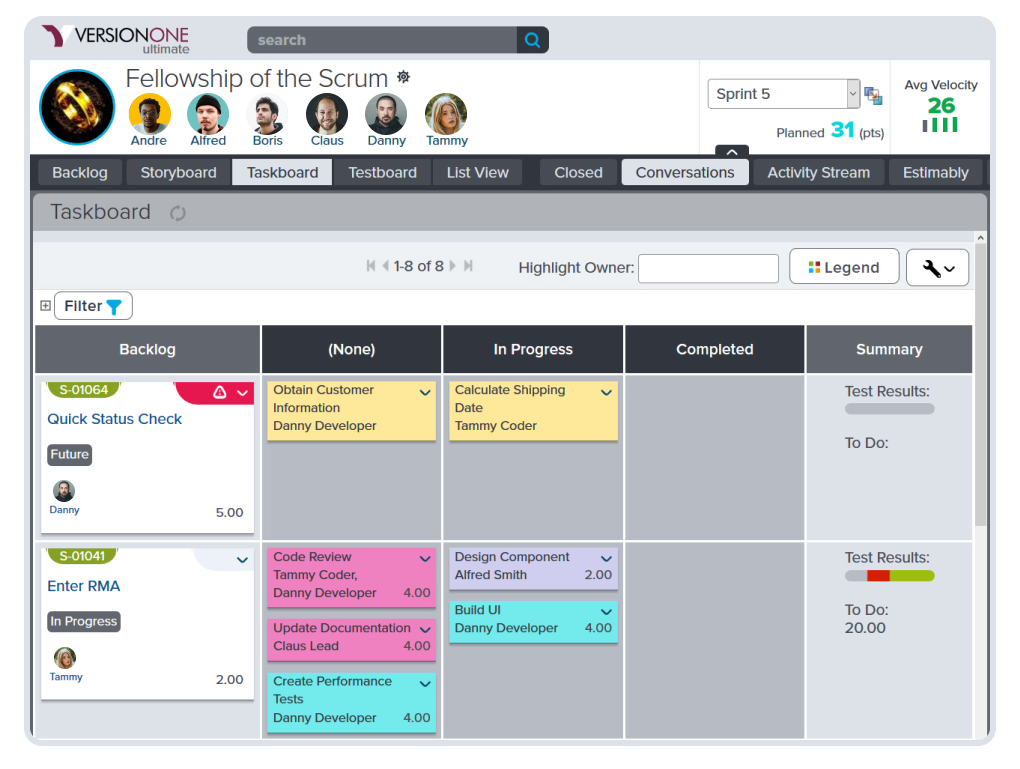
Disadvantages: you need some technical assistance to implement the product. Besides, it is difficult to navigate in some sections.
Pricing: a free version with limited functions is available, while a minimum tariff plan costs $29 per month. You can use a trial version for 30 days.
Rating at Capterra is 4.1.
Taiga
Platforms: Web, iOS, Android, Windows, Linux.
Features: users like an intuitive interface, sprint planning, Kanban boards, wiki-docs, burnout charts and color hashtags.
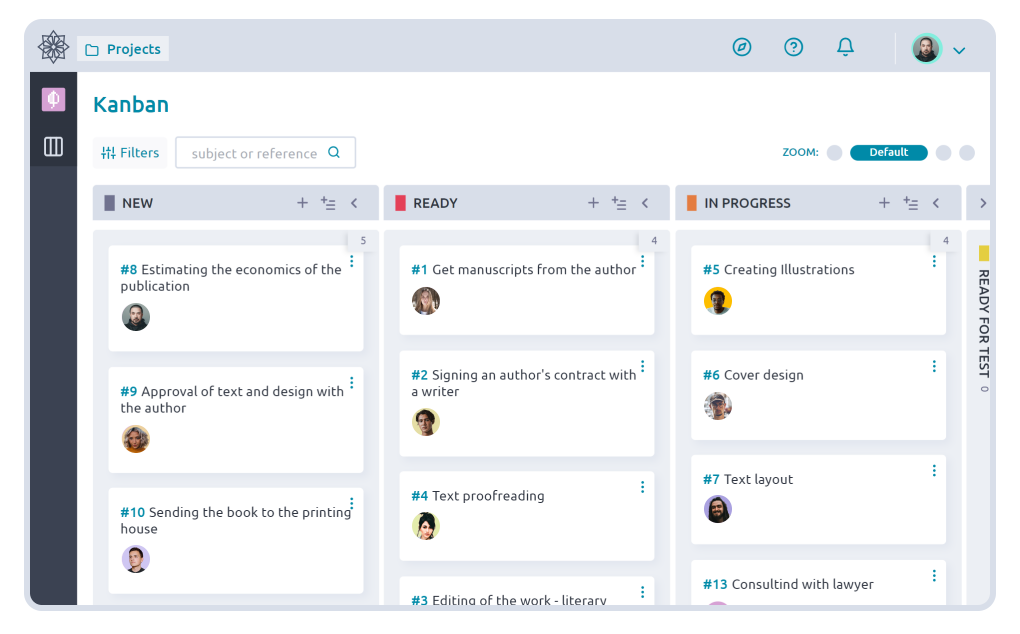
Disadvantages: new users understand not all the terms, integration is available with not all of the necessary services, reporting is not perfect.
Pricing: teams with up to 15 members and up to 5 projects can use the tool for free. The basic tariff plan costs min. $7 per user/month. A trial version is also available.
Rating at Capterra is 4.4.
Quire
Platforms: Web, iOS, Android, Windows, Mac.
Features: the most important functions of this product are Kanban boards, a calendar, task management, progress tracking, templates and prioritizing. They are operating effortlessly, so the tool is preferred by different teams in many business areas.
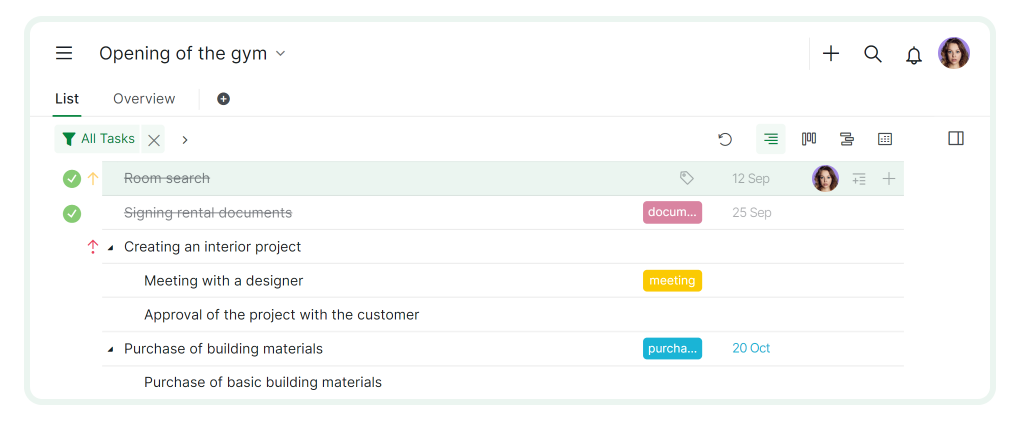
Disadvantages: not all users like the minimalistic design of the product, some find it difficult to understand the connection between tasks and subtasks, Gantt charts are missing.
Pricing: teams with up to 10 members, managing up to 8 projects can use the tool for free. The basic tariff plan costs $10.95 per user/month. A 30-day trial version is available.
Rating at Capterra is 4.7.
Toggl Plan
Platforms: Web, SaaS, cloud.
Features: intuitive tool for flexible planning, which is appreciated for the following functions: color timeline, a possibility to move cards between the columns, Kanban boards and notes.
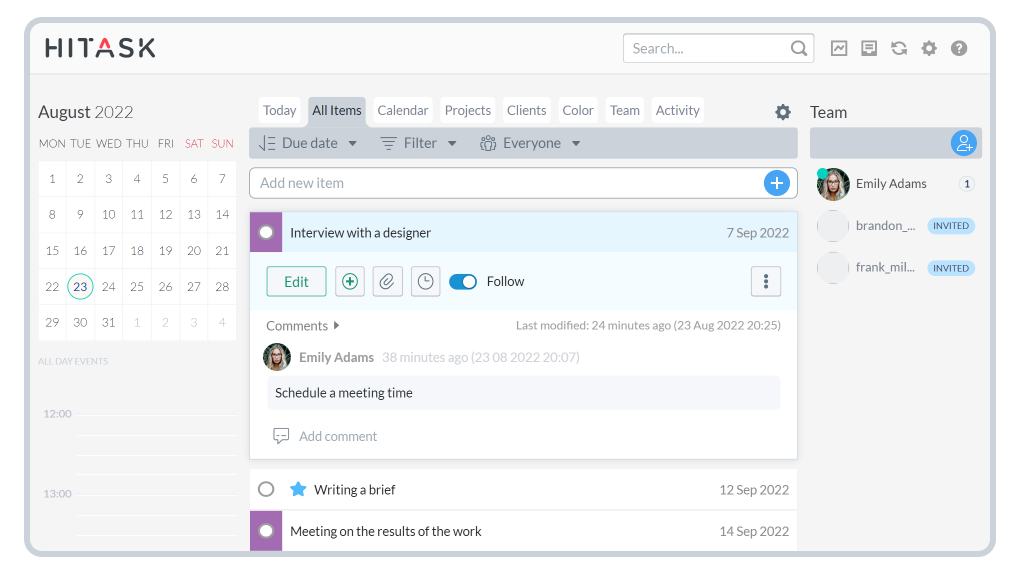
Disadvantages: problems with integration of the time tracker Toggl Track, data migration is also incorrect.
Pricing: the price starts at $8 per user/month. A 14-day free trial version is available.
Rating at Capterra is 4.5.
Hive
Platforms: Web, iOS, Android, Windows, Mac.
Features: this tracker is good for agile project management owing to its adaptivity. It features convenient dashboards for each team member, where one can track tasks, assigned to a particular user, and see the task status. You get an overview of the productivity of the team and every employee.
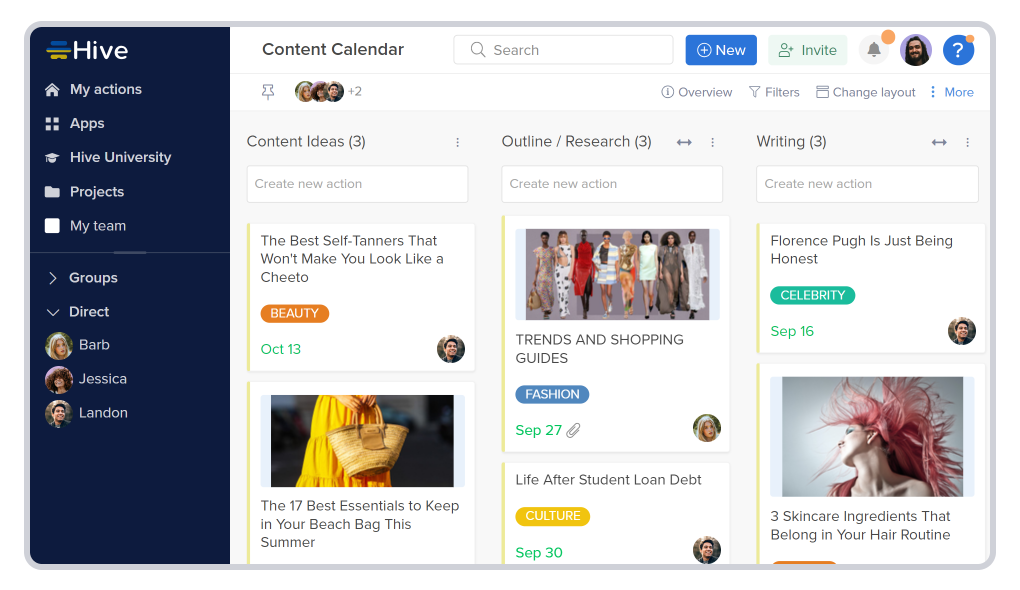
Disadvantages: chats and notifications are not always correct.
Pricing: a free version is available, which is good for teams with up to 2 users. Paid tariffs cost min. $16 per user/month. A trial version is available.
Rating at Capterra is 4.5.
ZenTao
Platforms: Web, iOS, Android, Windows, Mac, Linux.
Features: the main idea of the product is to make development and management of the open code projects fast and easy. It offers a new quality level of testing, documentation management and error correction.
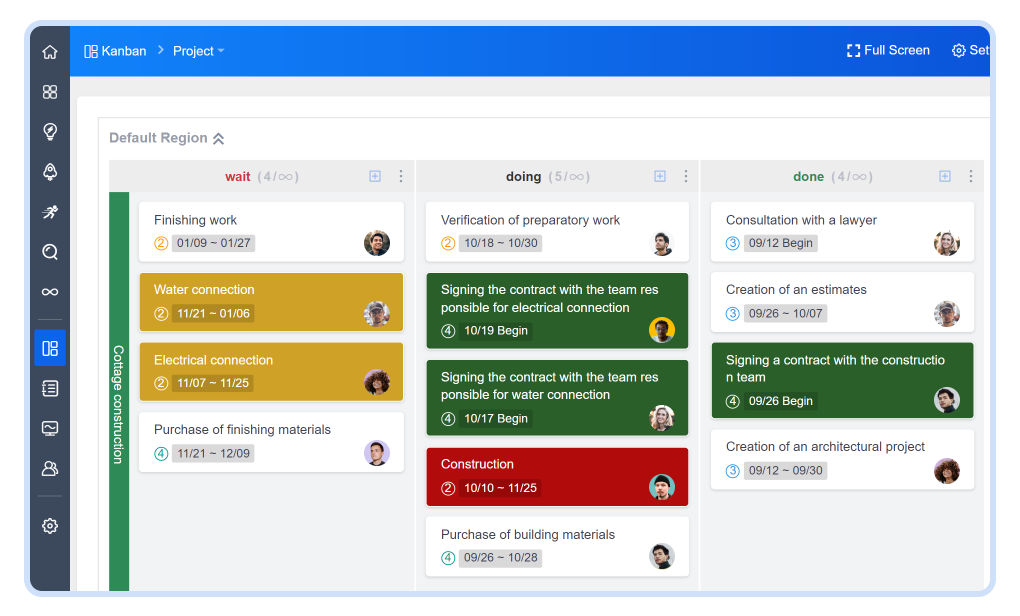
Disadvantages: there are problems with documentation, language versions are not perfect.
Pricing: the tool has a free version, paid tariffs start at $35 per user/year. A trial period is available.
Rating at Capterra is 4.
Kantree
Platforms: iOS, Android, Windows, Linux, Web.
Features: the product is presented as a convenient and visually attractive solution for teams with 5 to 50 members. This tracker becomes a good alternative to tables and facilitates project management and progress tracking.
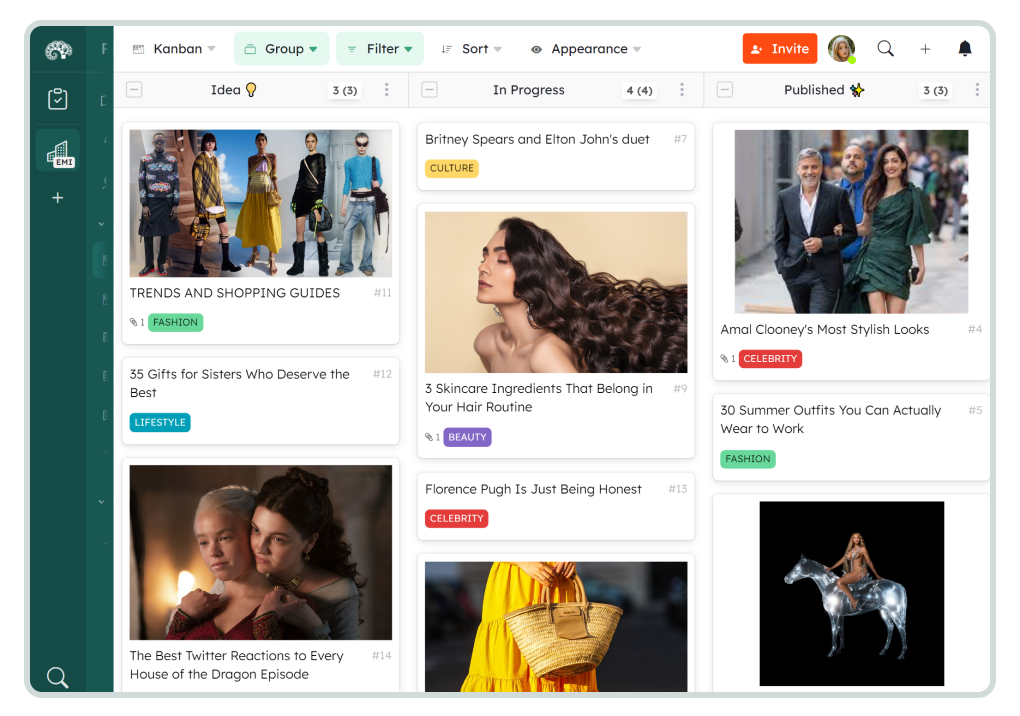
Disadvantages: not all users are satisfied with statistics; working with big data is troublesome.
Pricing: the prices start at $7 per user/month. A free trial version is available.
Rating at Capterra is 4.6.
Notion
Platforms: Web, iOS, Android, Windows, Mac.
Features: a multifunctional tool with Gantt charts, Kanban boards, to-do lists, budgeting and much more.
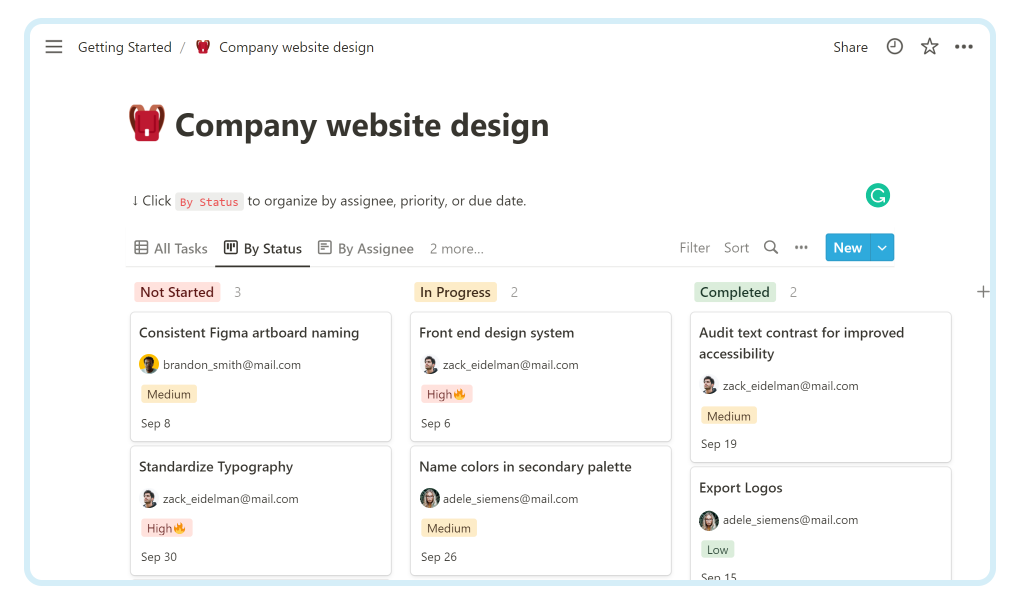
Disadvantages: technical failures sometimes occur, the notifications are often incorrect.
Pricing: the tool is free for personal use. Teams will have to pay $4 per user/month.
Rating at Capterra is 4.8.
Hitask
Platforms: Web, iOS, Android, Windows, Mac, Linux.
Features: an intuitive task tracker which helps you to make a list of tasks, assign them to employees, set time and generate reports.
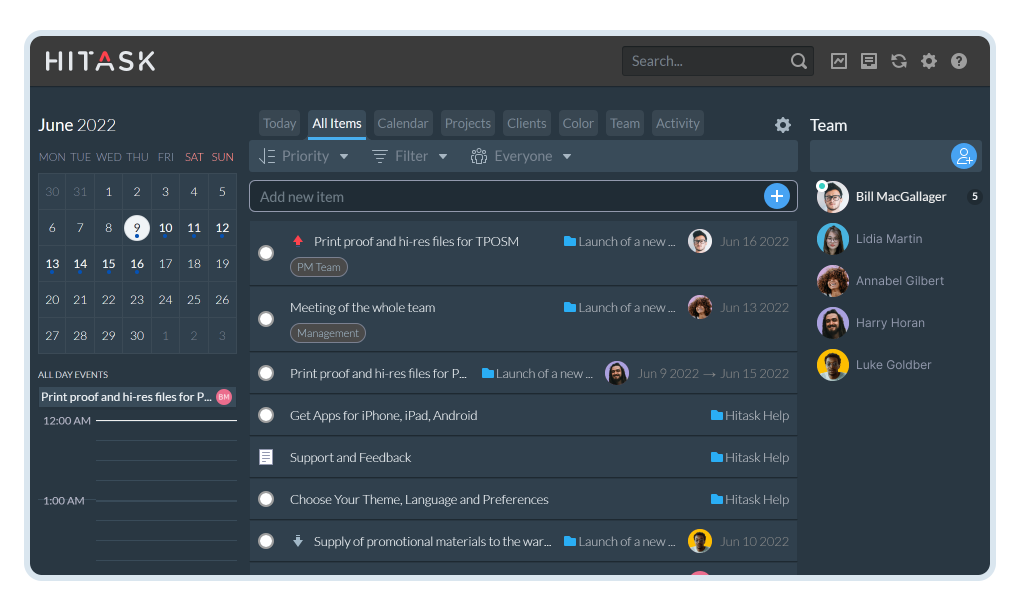
Disadvantages: technical failures sometimes occur, technical support is slow.
Pricing: the tool is free for teams with up to 5 users. For more users the product will cost between $5 and $20 per user/month. You can also use a trial version to test the product.
Rating at Capterra is 4.
Planview LeanKit
Platforms: Web, SaaS, cloud, iOS, Android.
Features: the tool is based on Kanban boards, as well as management by objectives and results, much attention is given to measurable indicators. Integrations with other services are possible.
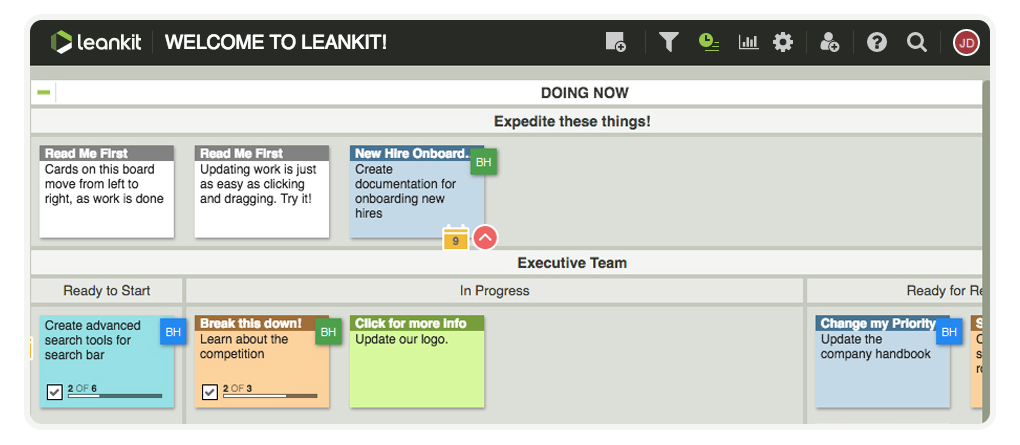
Disadvantages: not all users like too simple design, unperfect reporting and no detailed instructions.
Pricing: starting at $20 per user/month. A free trial period is available.
Rating at Capterra is 4.4.
Agilean
Platforms: Web, SaaS, cloud.
Features: a software for project management, based on artificial intelligence. It offers task assignment, progress tracking, Gantt charts and Kanban boards, process automatisation and access control. It is good for small and middle-sized teams.
Disadvantages: conversion of voice into text is not perfect, errors sometimes occur, user interface could be better.
Pricing: teams with up to 50 members can use the tool free of charge. Paid tariff costs $5 per user/month. A trial version is available to test the functionality of the product.
Rating at Capterra is 4.7.
Binfire
Platforms: Web, Android, Windows, Mac, Linux.
Features: a tool with many functions for agile project management: Kanban boards, Gantt charts, burnout diagrams, a chat, comments and a calendar.
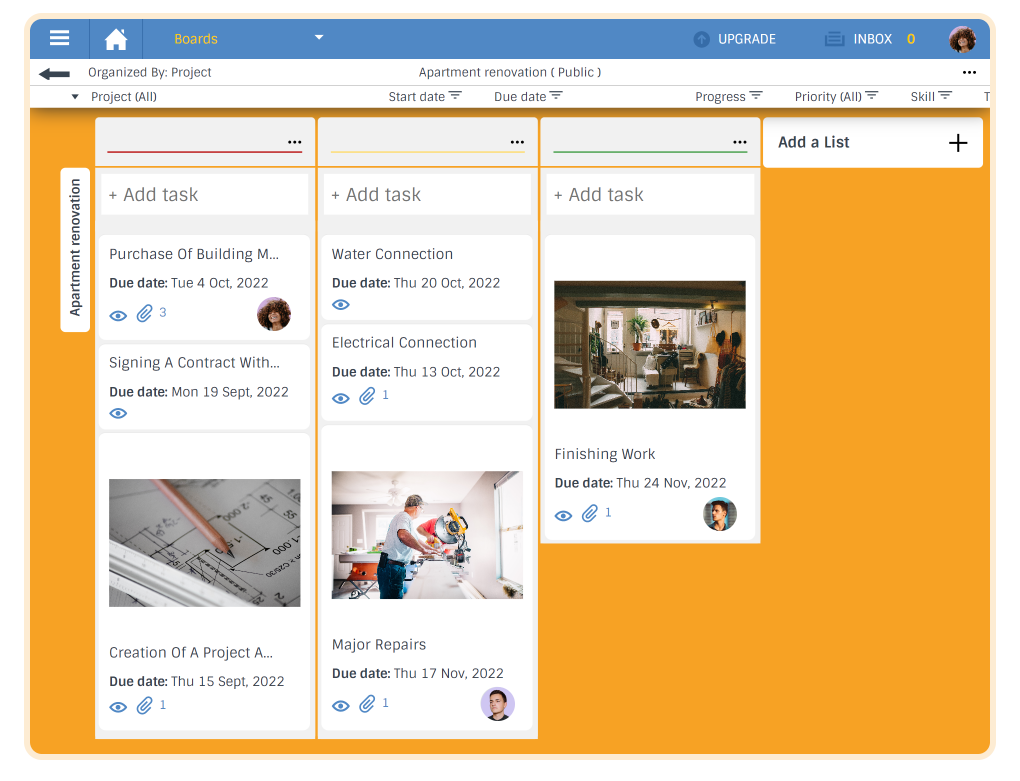
Disadvantages: poor integration options, the setup is not intuitive.
Pricing: the product is free for up to 3 users. Paid tariff starts at $6.5 per user/month. A free trial period is available.
Rating at Capterra is 4.9.
According to your needs, you can choose software for flexible project management, which will be the optimal combination of price, quality, and convenience for your team. We also recommend to think about the prospects and implement the product that can be used as your business grows.
